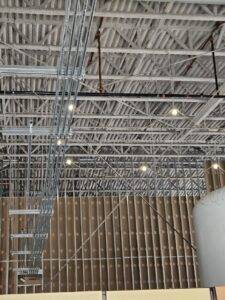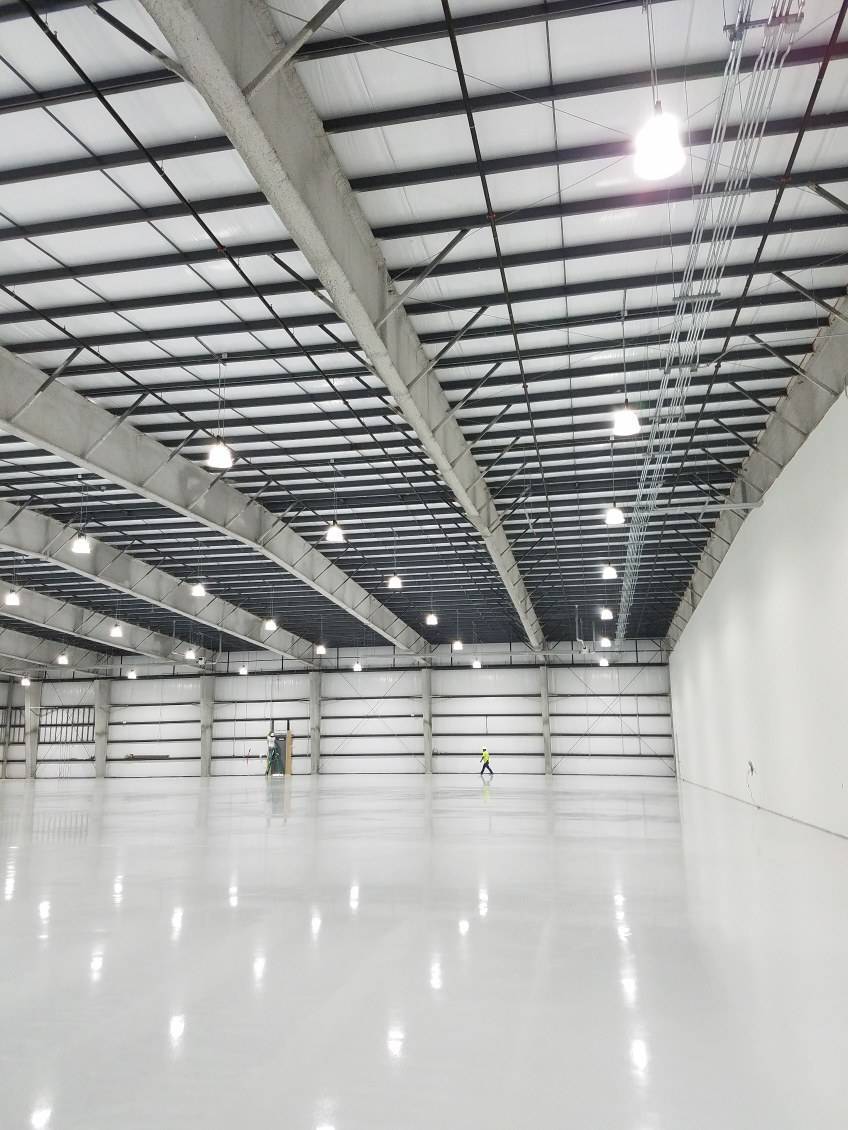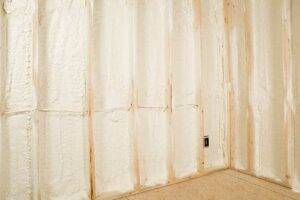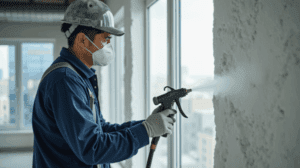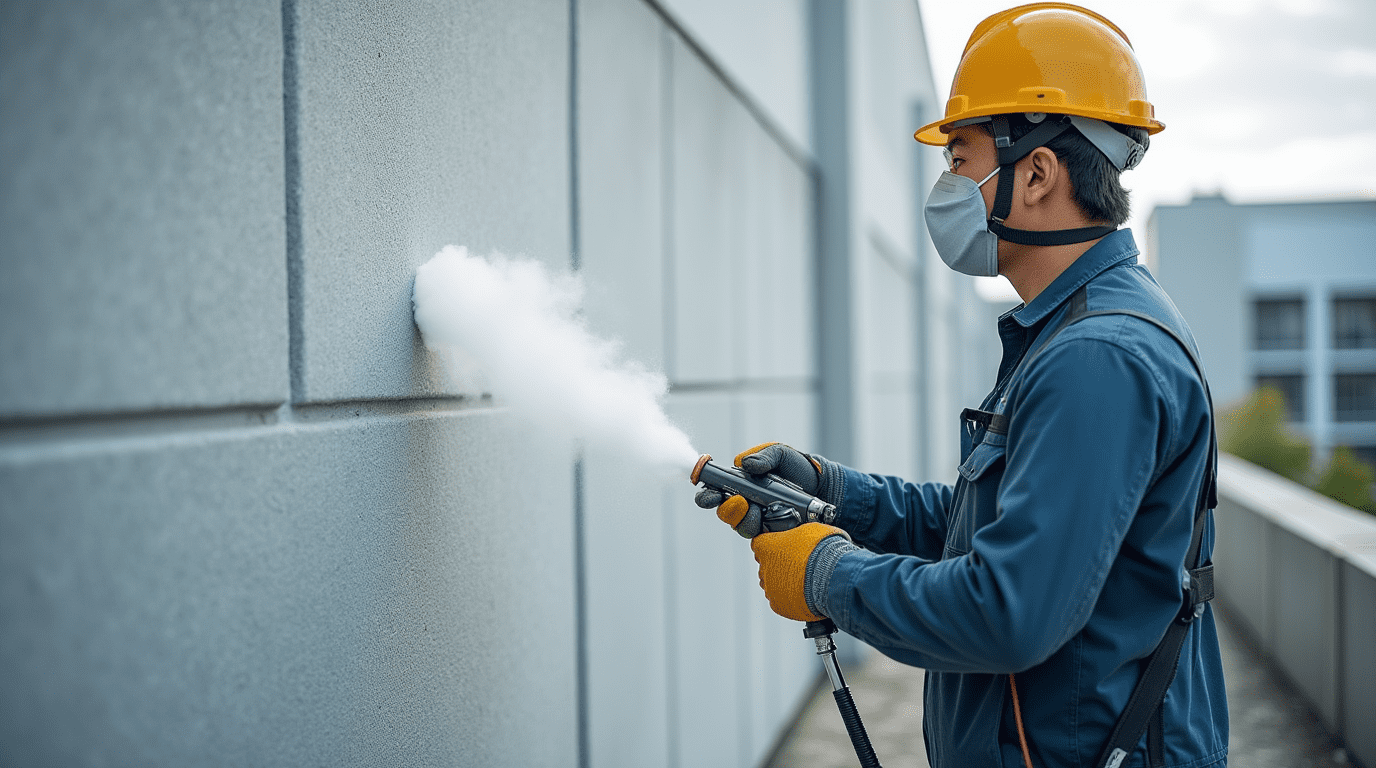What is Intumescent Fireproofing?
Bahl Fireproofing
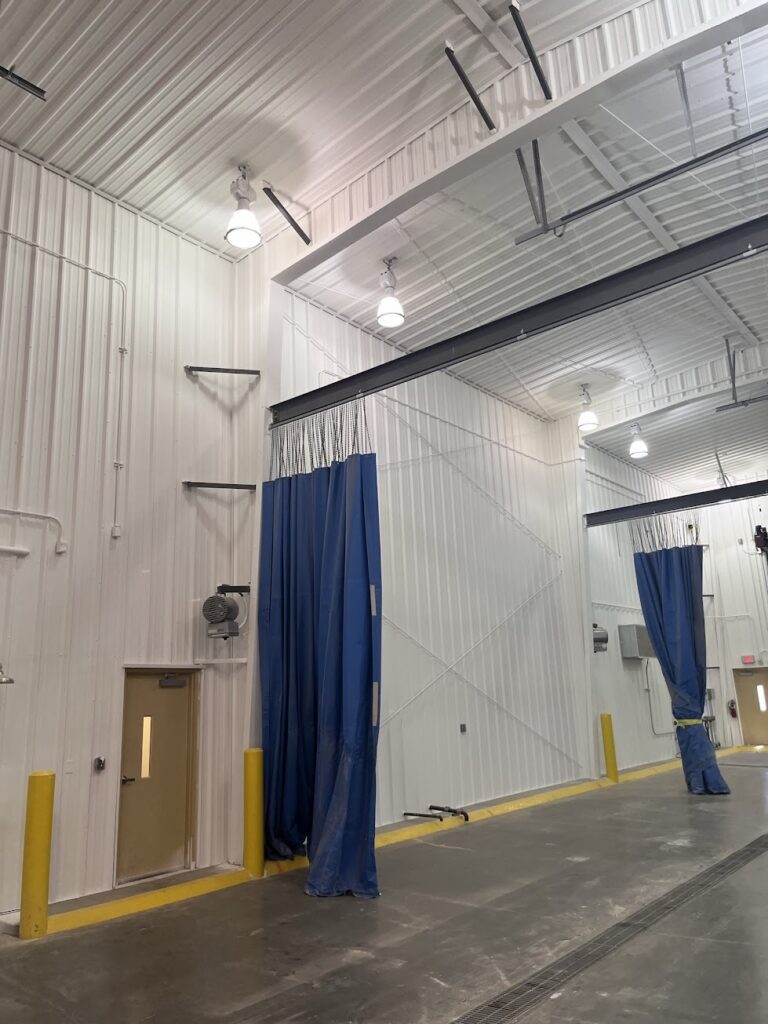
Intumescent Fireproofing: Code-Compliant Steel Protection
TLDR: Intumescent fireproofing is a thin-film coating system that expands when exposed to heat, forming an insulating char barrier that protects structural steel from fire damage. Applied at thicknesses ranging from 1/16″ to 1/2″, these coatings meet UL fire resistance ratings from 30 minutes to 4 hours while maintaining architectural finish quality. This guide covers how intumescent systems work, where they’re specified, and what facility managers and contractors need to know for code-compliant installation.
When structural steel reaches temperatures above 1,000°F during a fire, it loses load-bearing capacity within minutes. Without proper fire protection, steel beams and columns can fail catastrophically, leading to building collapse, loss of life, and millions in property damage. Building codes throughout Texas, Kansas, and Oklahoma require fire-rated protection on structural steel in most commercial and industrial occupancies. The challenge is selecting a system that meets code requirements while working within architectural constraints, project budgets, and schedule demands.
Intumescent fireproofing has become the preferred solution for protecting exposed structural steel in commercial buildings where aesthetics matter. Unlike bulky cementitious systems that add inches of thickness and weight, intumescent coatings apply as thin films that expand only when exposed to fire. This makes them ideal for office buildings, retail spaces, healthcare facilities, and any project where exposed steel is part of the architectural design.
Why Code-Compliant Fireproofing Matters for Commercial Safety
The International Building Code (IBC) establishes minimum fire resistance ratings for structural elements based on building type, occupancy classification, and construction type. Most commercial steel-framed buildings require fire resistance ratings between 1 and 3 hours for columns and beams. These requirements exist because unprotected steel loses half its strength at approximately 1,100°F, temperatures reached within 5 to 10 minutes in typical building fires.
A code-compliant fire protection system must have a current UL Design listing that matches your specific steel profile, coating thickness, and required fire rating. Generic product approvals are not sufficient. The system must be installed by trained applicators who follow manufacturer specifications for surface preparation, mixing ratios, application methods, and film thickness verification. Insurance carriers, building officials, and third-party inspectors all verify compliance through submitted UL designs and field inspection reports.
Beyond life safety, proper fireproofing protects your capital investment. Post-fire structural assessments often require complete steel replacement if members were unprotected or improperly protected. The cost of compliant fireproofing represents less than 2% of total building cost but prevents total loss scenarios that exceed insurance coverage limits.
How Intumescent Coatings Work
Intumescent fireproofing contains chemical compounds that react endothermically when exposed to temperatures above 400°F. The coating swells to many times its original thickness, forming a thick char layer that insulates the steel substrate from direct flame contact and radiant heat transfer.
The expansion process occurs in stages. Initial heating drives off moisture and begins chemical decomposition of base resins. As temperatures rise above 600°F, blowing agents release gases that create the expanded cellular structure. Simultaneously, binders cross-link to form a stable char matrix. The final expanded char typically achieves 20 to 50 times the original dry film thickness, creating an insulating barrier with thermal conductivity values below 0.1 BTU/(hr·ft·°F).
This char layer works through three mechanisms. First, it creates physical distance between the flame and steel surface. Second, the low-density cellular structure traps air, which has poor thermal conductivity. Third, the ongoing endothermic reaction absorbs heat energy that would otherwise transfer to the steel. Together, these effects keep steel temperatures below critical failure thresholds for the rated duration, typically keeping steel below 1,000°F while fire temperatures exceed 1,800°F.
Product formulations vary significantly. Epoxy-based intumescents offer maximum durability and chemical resistance for industrial environments. Water-based acrylic systems provide easier application and lower VOC emissions for occupied spaces. Solvent-based coatings deliver superior adhesion in challenging conditions. Each chemistry requires specific primers, topcoats, and application methods detailed in manufacturer technical data sheets.
Commercial and Industrial Applications
Intumescent systems are specified most frequently in these scenarios:
Exposed architectural steel: Office lobbies, atriums, retail spaces, and educational facilities where steel is visible and painted finish quality matters. Film thickness ranges from 1/16″ to 3/16″ for 1 to 2 hour ratings maintain tight dimensional tolerances.
Parking structures: Open-air decks and ramps where weather exposure requires UV-stable topcoats and moisture-resistant base coats. Systems must meet ASTM E119 fire testing standards while withstanding thermal cycling and de-icing salt exposure.
Healthcare and institutional buildings: Projects where dust, odor, and downtime restrictions make spray-applied cementitious systems impractical. Low-VOC water-based intumescents can be applied in occupied areas with minimal disruption.
High-rise construction: Upper floors where crane access for heavy cementitious materials is limited and weight reduction matters for foundation design. Intumescent systems weigh less than 1 lb/sf compared to 10+ lb/sf for equivalent cementitious protection.
Historical renovations: Adaptive reuse projects where maintaining original steel profiles is essential for architectural integrity and historic preservation requirements.
Benefits extend beyond aesthetics. Intumescent coatings seal steel against corrosion, eliminating separate primer requirements in controlled indoor environments. They accommodate structural movement without cracking, unlike rigid cementitious systems. Inspection and maintenance are straightforward since damage is immediately visible, and repairs involve simple recoating rather than chipping and replastering.
Comparison with Other Fireproofing Systems
Cementitious spray-applied fireproofing (SAFI) remains the most economical solution for concealed structural steel in mechanical spaces, warehouses, and above suspended ceilings. Applied at thicknesses from 3/4″ to 3″, these cement-based materials achieve 1 to 4 hour ratings at installed costs 40-60% below equivalent intumescent systems. However, SAFI adds significant weight, requires professional finish work if exposed, and creates substantial dust during application.
Gypsum board encasement provides clean finish surfaces and excellent sound attenuation but consumes floor area, complicates MEP coordination, and increases labor costs for framing and finishing. Board systems work well for columns but become impractical for beam assemblies with complex geometries.
Concrete encasement offers maximum durability and the highest fire ratings but adds enormous dead load to foundations and reduces clear span capacity. It’s primarily specified in parking structures and industrial facilities where load is beneficial or unavoidable.
According to ICC-SAFE, each system type has appropriate applications based on project requirements. Selection criteria include fire rating requirements, environmental exposure, aesthetic expectations, weight restrictions, and total installed cost including finish work and long-term maintenance.
Product Selection and Installation Quality Factors
Successful intumescent fireproofing depends on six critical factors:
UL Design matching: Your project requires a UL Design number that specifically covers your steel profile (W-shapes, HSS, bar joist), fire rating requirement, and application method. Designs are not interchangeable between products or manufacturers. The design dictates required dry film thickness per rating hour, primer specifications, and topcoat requirements.
Surface preparation: Steel must be cleaned to SSPC-SP standards appropriate for the primer system, typically SP-6 commercial blast or SP-3 power tool cleaning minimum. Mill scale, rust, oil, and existing coatings prevent proper adhesion and void UL certifications. Surface profile requirements range from 1 to 3 mils depending on primer chemistry.
Application environment: Temperature and humidity during application and cure affect performance. Most systems require substrate temperatures between 40°F and 100°F with relative humidity below 85%. Cold steel causes condensation that prevents adhesion. High humidity extends cure times and can cause surface defects.
Film thickness verification: Wet film thickness gauges during application and dry film thickness gauges after cure ensure adequate protection. Underthin areas fail prematurely. Overthick application wastes money and may crack due to excessive expansion forces. Quality contractors verify thickness at specified intervals documented in daily reports.
Multi-coat application: Most projects require primer, basecoat, and finish topcoat. Each layer serves specific functions: corrosion protection, fire resistance, and aesthetic durability. Coat sequencing and recoat windows specified in technical data sheets must be followed precisely.
Qualified applicators: Product manufacturers certify contractors who complete training programs covering mixing, application techniques, and quality control procedures. Certification ensures installers understand system-specific requirements that vary between product lines.
Representative Project Example
A recent 12-story office building in Oklahoma City required 2-hour fire protection on exposed steel columns and perimeter beams in the main lobby and executive floors. The architect specified intumescent coating to maintain clean sight lines and minimize column encroachment into usable floor area.
We selected an epoxy-based system with a dry film thickness of 28 mils (approximately 1/32″) per the UL Design for W14x90 columns. Surface preparation included power tool cleaning to remove mill scale and shop primer, followed by epoxy primer application. Base coat application used airless spray equipment calibrated to achieve target wet film thickness in two passes, with 24-hour recoat window between layers. After cure verification, two coats of architectural enamel topcoat matched the interior color palette.
Total column protection added less than 1/8″ to member dimensions, avoiding the 4″ to 6″ dimensional increase that gypsum encasement would have required. The finished installation passed third-party inspection with verified film thickness ranging from 28 to 32 mils across all test locations.
Frequently Asked Questions
How long does intumescent fireproofing last?
Properly applied intumescent coatings in controlled interior environments remain effective for the life of the building, typically 30+ years. Regular inspection every 5 years confirms coating integrity. Exterior applications or harsh industrial environments may require topcoat renewal every 10 to 15 years to maintain weather protection, but the fireproofing base coat remains effective.
Can intumescent coatings be applied over existing paint?
Not without specific manufacturer approval and surface preparation. Most UL Designs require application directly to clean steel or over specified primer systems. Existing coatings must be removed to bare metal or primed surface to ensure proper adhesion and validated fire performance. Never apply intumescent over unknown coatings.
What fire ratings can intumescent systems achieve?
Current UL-listed intumescent products achieve ratings from 30 minutes to 4 hours depending on steel profile and coating thickness. One-hour ratings typically require 1/16″ to 1/8″ dry film. Two-hour ratings need 1/8″ to 3/16″. Three and four-hour ratings may require 3/8″ to 1/2″ or multiple product layers, approaching thicknesses where cementitious systems become more practical.
Do intumescent coatings protect against corrosion?
Yes, when specified with appropriate primers and topcoats. The coating system seals steel from atmospheric moisture and contaminants. However, NFPA standards require corrosion protection to be secondary to fire protection performance. In corrosive environments, specify systems with enhanced barrier properties and compatible topcoats rated for chemical exposure.
How is installation quality verified?
Dry film thickness measurement at prescribed intervals using magnetic thickness gauges. Industry standard requires minimum 6 readings per 100 square feet of coated surface, with all readings meeting minimum specification and average thickness 10% above minimum. Documentation includes surface preparation reports, material batch numbers, application conditions, and thickness verification data submitted to the building official and owner’s representative.
Key Takeaways
- Intumescent fireproofing expands 20-50x when heated, forming insulating char that protects structural steel
- Thin-film application (1/16″ to 1/2″) maintains architectural appearance while meeting code requirements
- Each project requires specific UL Design matching steel profile, fire rating, and application method
- Proper surface preparation, film thickness control, and qualified applicators are essential for code compliance
- Systems provide 30-minute to 4-hour fire resistance ratings depending on product and thickness
- Epoxy, water-based, and solvent-based chemistries suit different environmental and aesthetic requirements
- Regular inspection confirms coating integrity; properly applied systems last decades in controlled environments
Protect Your Investment with Code-Compliant Fireproofing
Structural steel protection is not a product decision, it’s a safety system that requires proper engineering, quality materials, and skilled installation. At Bahl Fireproofing, we work directly with architects, engineers, and building owners across Texas, Kansas, and Oklahoma to specify and install fire protection systems that meet code requirements and project constraints. Whether you’re protecting exposed steel in a high-rise lobby or warehouse columns under tight schedule demands, we provide UL-listed systems backed by manufacturer certifications and third-party inspection verification. Contact Bahl Fireproofing to discuss your project requirements and get accurate specification guidance from experienced fireproofing professionals.
Disclaimer: This article provides general educational information about fireproofing and insulation systems and does not constitute professional engineering advice or product specification. System selection must be based on project-specific fire ratings, thermal requirements, acoustic performance needs, environmental conditions, substrate requirements, and budget constraints. Code requirements vary by jurisdiction and project type. Always consult with a licensed professional and verify UL or FM assembly listings before finalizing specifications.

